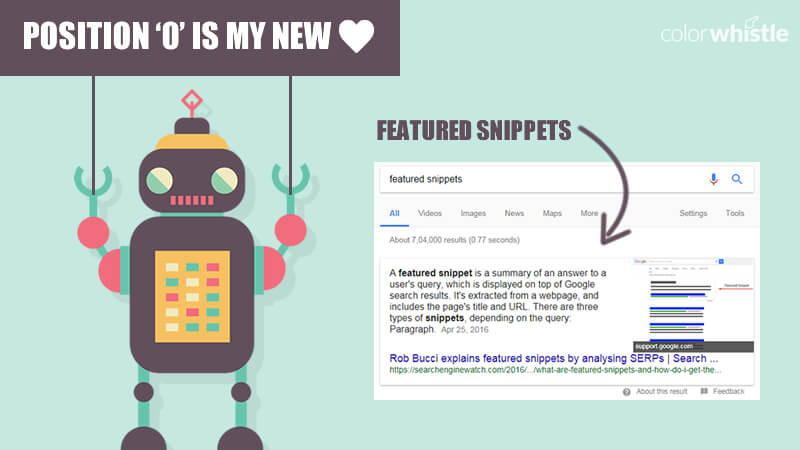The featured snippets are among the most important positions on Google’s search engine results page (SERP). Known as “position zero,” these snippets appear above organic results and offer users direct, concise answers to their questions, making them a powerful tool. Optimizing for featured snippets is essential for any brand, website, or content creator looking to maximize visibility in today’s competitive digital landscape.
In this guide, we’ll break down everything you need to know about featured snippets: what they are, the different types, why they matter, and, most importantly, actionable strategies to help you optimize your content to earn these valuable placements. At ColorWhistle, we’re committed to helping brands improve their online presence through targeted SEO services.
What Are Featured Snippets?
Featured snippets are concise summaries of answers that Google takes directly from a webpage to answer a user’s query. These snippets are positioned at the top of the SERP, meaning they are shown above regular search results. They typically include a link to the page, the URL, and sometimes an image.
Types of Featured Snippets
Google provides featured snippets in various formats based on the type of content. Each snippet type responds to specific user intents:
- Paragraph Snippets: These are short, text-based answers to direct questions, often appearing when users ask “what is” or “why” questions.
- List Snippets: List snippets appear when a query requests a list of items, steps, or ranked data. List snippets can be ordered (numbered steps) or unordered (bullet points).

- Table Snippets: Google shows tabular data from content in the SERP as table snippets when presenting a comparison or data set, which is helpful for data-heavy queries.
- Video Snippets: If a video answers a query more effectively, Google may present a featured video snippet. Video snippets are often shown for “how-to” questions, making them valuable for content creators on platforms like YouTube.
| Type | Format | Examples |
|---|---|---|
| Paragraph | Short answer text | “What is SEO?” |
| List | Bullet or numbered list | “Steps to start a blog” |
| Table | Data comparison | “Best laptops for students” |
| Video | Embedded video | “How to tie a tie” |
Also Read
Why Featured Snippets Matter
Featured snippets are critical for two reasons:
- Visibility and Click-Through Rate (CTR): Appearing in a featured snippet significantly increases a page’s visibility. While users may get part of their answer directly from the SERP, leading to higher CTRs.
- Authority and Credibility: Being chosen as a featured snippet establishes credibility. Users see content in a snippet as a “verified” source, which boosts authority and user trust.
Difference Between Featured Snippets and AI Overview in Google Search Results
- Featured Snippet: Appears at the top of search results, providing a direct answer sourced from a specific webpage. It includes a link to the source, often displayed in a concise paragraph, list, or table format. Google selects this content based on its relevance to user queries.
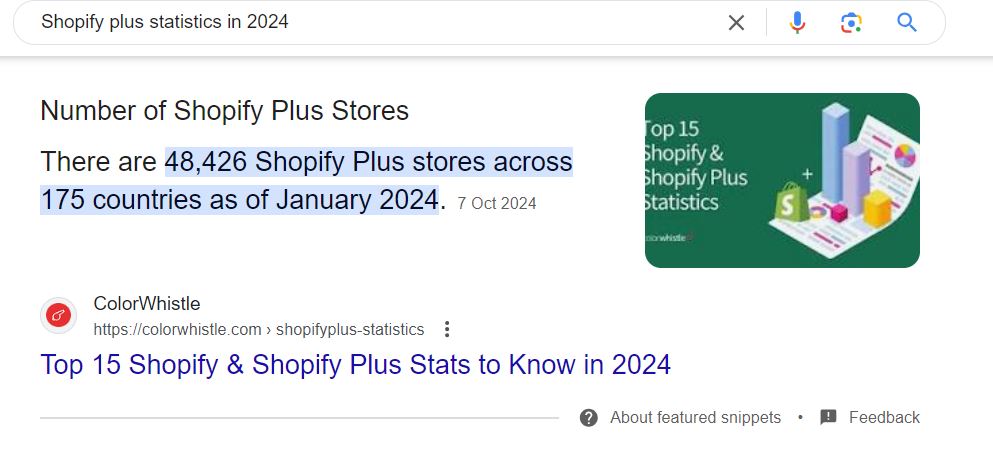
- AI Overview: Generated by Google’s AI, this overview synthesizes information from multiple sources and provides a summary without direct attribution to a single page. Unlike snippets, AI overviews offer broader context but may not include a link to a specific source.
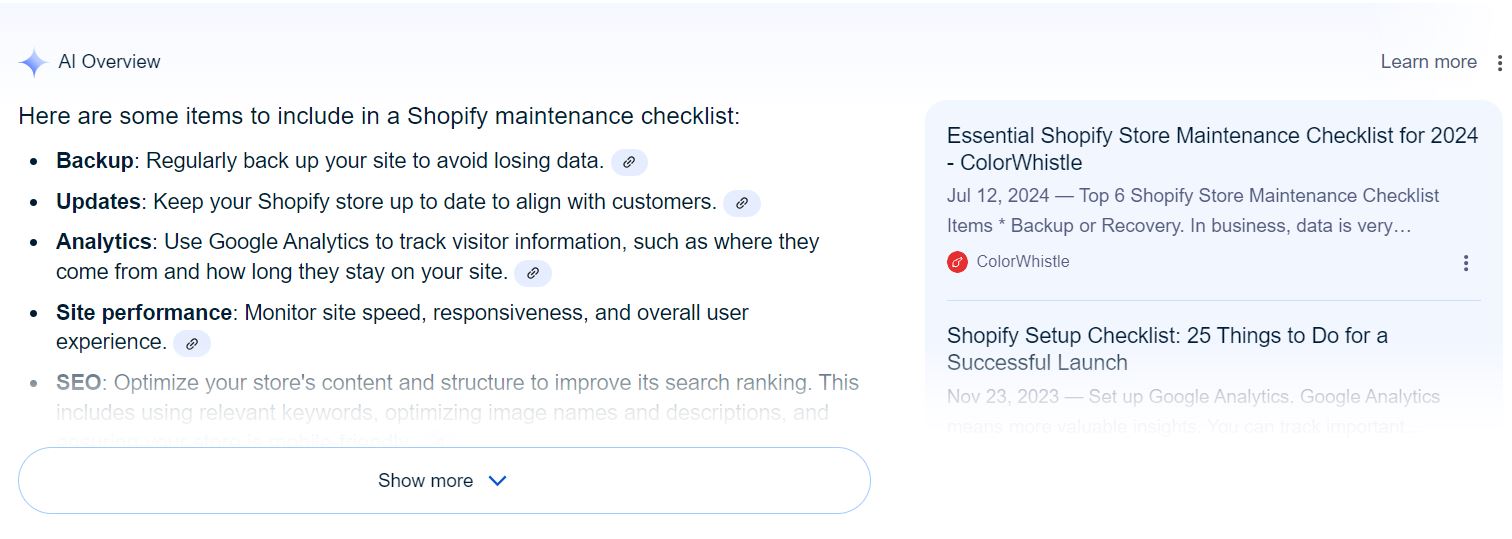
How to Optimize for Featured Snippets?
To enhance the chances of capturing a featured snippet, content needs to be structured thoughtfully and purposefully. Here are the steps and best practices to improve the content.
1. Research and Select Target Keywords:
Finding the right keywords is crucial for targeting snippets. Question-based and long-tail keywords are ideal, especially ones prefaced by “how,” “why,” “what,” and “best.” Use tools like SEMrush, Ahrefs, and Answer the Public to identify these queries.
- Identify Questions: Look for commonly asked questions. The “People Also Ask” box on Google and tools like Answer the Public can give a sense of questions that the audience frequently asks.
- Analyze Existing Snippets: Check the SERP for the chosen keyword to see if a snippet already exists. Analyzing the current snippet structure helps us understand how Google is displaying answers for this topic.
2. Structure the Content for Snippet Potential
Google prefers clear and concise answers for snippets, so structure content in a way that provides quick takeaways while encouraging further reading.
- Use the Inverted Pyramid Structure
The inverted pyramid structure is effective for paragraph snippets. Start by answering the main question in the first 40-60 words, then move into more detail.
Pro Tip: Keep answers under 60 words for paragraph snippets and use headings (H2, H3) that mimic search queries.
- Use List Format for Step-by-Step or Ranked Queries
Lists are ideal for “how-to” and comparison topics. Make sure each step is straightforward and avoid adding unnecessary details. Use HTML tags (<ol> for ordered lists, <ul> for unordered lists) to structure lists clearly, making it easier for Google to pull content.
- Utilize Tables for Data-Driven Content
Tables are great for comparison content, such as pricing, specs, or rankings. Use basic HTML <table> tags and ensure content is structured in an easy-to-read format.
3. Optimize On-Page SEO and Formatting
Optimization extends beyond keywords; the page layout, formatting, and meta elements also play a role.
- Descriptive Headings and Subheadings: Use headings that ask or questions, such as “What is Digital Marketing?” or “How to Use SEO for Snippets.”
- Concise Summaries: Google favors content that quickly addresses user intent, so concise summaries are crucial. Summarize key points in under 60 words at the beginning of sections.
- Include Visuals: Images and videos are increasingly common in snippets. Optimize images with descriptive ALT text and ensure videos are properly tagged for keywords.
- Add Schema Markup: FAQ and HowTo schema are particularly useful for snippet optimization, helping to structure answers more clearly.
4. Incorporate “People Also Ask” Questions
Use the “People Also Ask” feature to expand the range of snippet worthy content. Include the questions naturally throughout the content or add a FAQ section at the end.
5. Update and Iterate Regularly
Using tracking tools is essential for monitoring which keywords lead to snippets. Consider these tools for insights and analytics. Google frequently updates its algorithm, and competition for snippets is high. Regularly updating and refreshing content helps maintain snippet positions. Conduct a content audit every few months to see if new snippets have appeared for the keywords and adjust the content accordingly.
Also Read
Examples of Content Tailored for Featured Snippets achieved by ColorWhistle
Here are sample structures and snippets for different types of content to illustrate how to set up content for snippet potential:
- Keyword: Kitchen eCommerce Statistics
Blog Title: Kitchenware, Kitchen Appliances, Kitchen Furniture – Kitchen eCommerce Statistics
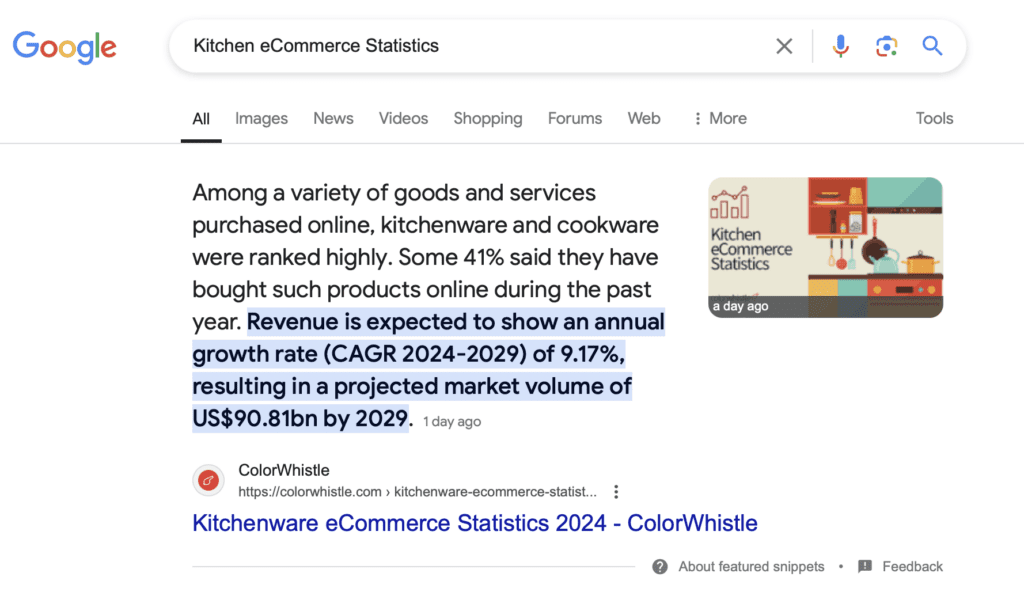
- Keyword: White label digital agency pricing
Page: White Label Digital Agency Pricing Packages
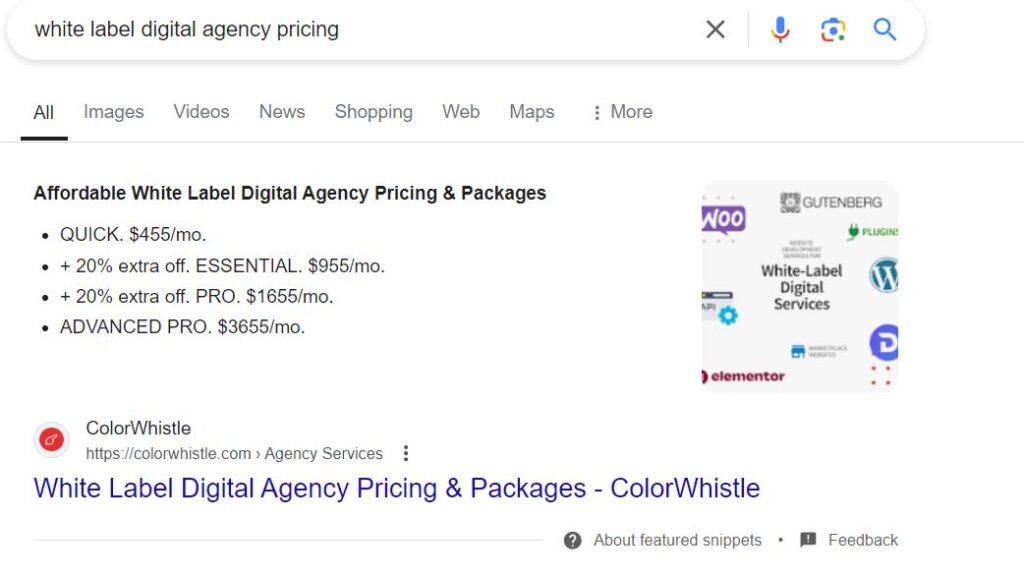
Conclusion
Optimizing for Google featured snippets requires a strategic approach focused on concise, question-based content and meticulous on-page SEO. By selecting the right keywords, structuring your content effectively, and continuously iterating, you can improve your chances of capturing these valuable positions.
With a focused approach and regular updates, your content can achieve the visibility and credibility that comes with a featured snippet on Google’s SERP. At ColorWhistle, our SEO services solutions are designed to help brands achieve this targeted visibility on Google’s SERP. If you need expert assistance send a message or give us a call at +1 (919) 234-5140, and we’ll promptly respond to your inquiry.

